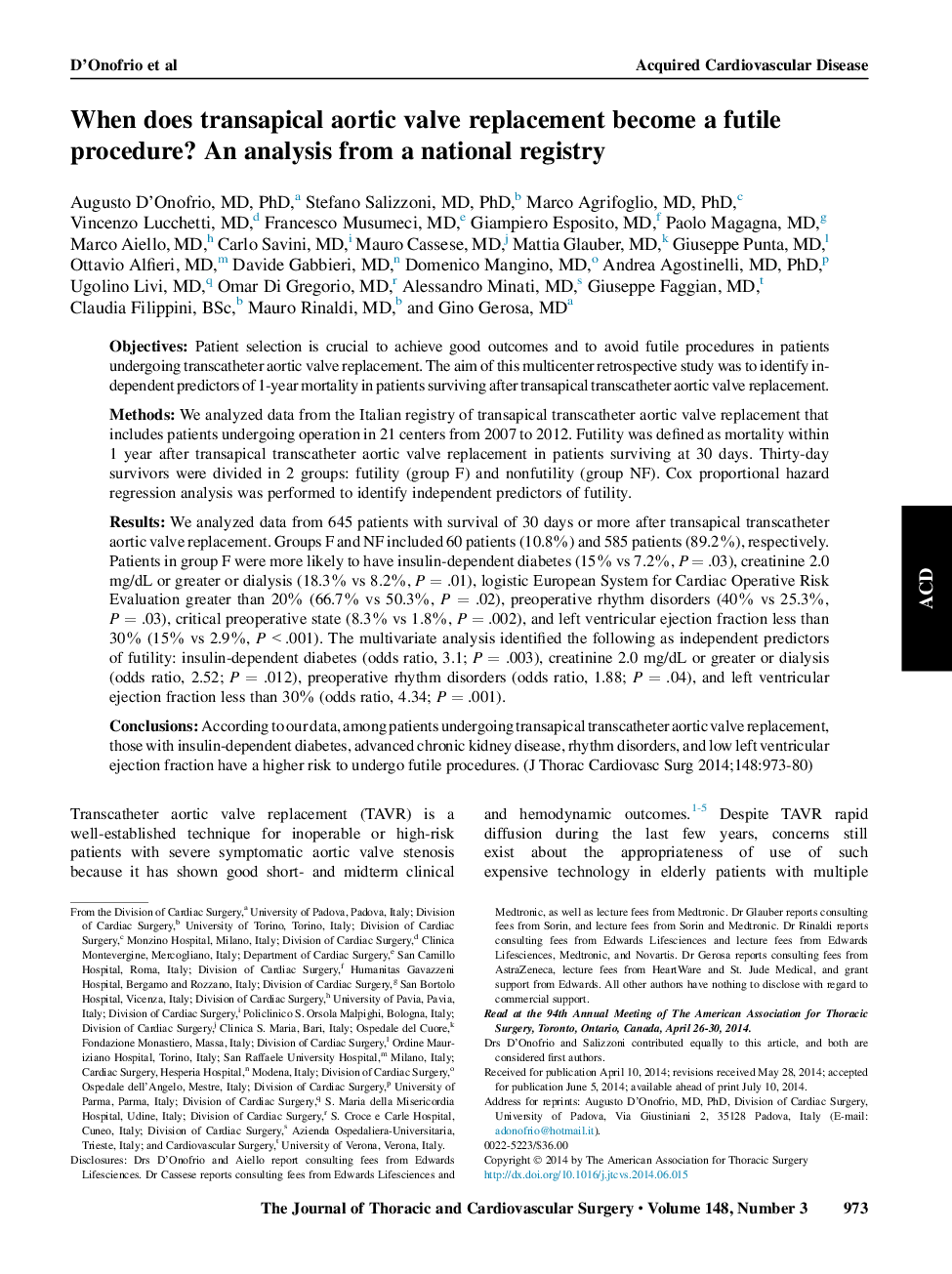| کد مقاله | کد نشریه | سال انتشار | مقاله انگلیسی | نسخه تمام متن |
|---|---|---|---|---|
| 5989318 | 1578607 | 2014 | 8 صفحه PDF | دانلود رایگان |
ObjectivesPatient selection is crucial to achieve good outcomes and to avoid futile procedures in patients undergoing transcatheter aortic valve replacement. The aim of this multicenter retrospective study was to identify independent predictors of 1-year mortality in patients surviving after transapical transcatheter aortic valve replacement.MethodsWe analyzed data from the Italian registry of transapical transcatheter aortic valve replacement that includes patients undergoing operation in 21 centers from 2007 to 2012. Futility was defined as mortality within 1 year after transapical transcatheter aortic valve replacement in patients surviving at 30 days. Thirty-day survivors were divided in 2 groups: futility (group F) and nonfutility (group NF). Cox proportional hazard regression analysis was performed to identify independent predictors of futility.ResultsWe analyzed data from 645 patients with survival of 30 days or more after transapical transcatheter aortic valve replacement. Groups F and NF included 60 patients (10.8%) and 585 patients (89.2%), respectively. Patients in group F were more likely to have insulin-dependent diabetes (15% vs 7.2%, PÂ =Â .03), creatinine 2.0 mg/dL or greater or dialysis (18.3% vs 8.2%, PÂ =Â .01), logistic European System for Cardiac Operative Risk Evaluation greater than 20% (66.7% vs 50.3%, PÂ =Â .02), preoperative rhythm disorders (40% vs 25.3%, PÂ =Â .03), critical preoperative state (8.3% vs 1.8%, PÂ =Â .002), and left ventricular ejection fraction less than 30% (15% vs 2.9%, PÂ <Â .001). The multivariate analysis identified the following as independent predictors of futility: insulin-dependent diabetes (odds ratio, 3.1; PÂ =Â .003), creatinine 2.0 mg/dL or greater or dialysis (odds ratio, 2.52; PÂ =Â .012), preoperative rhythm disorders (odds ratio, 1.88; PÂ =Â .04), and left ventricular ejection fraction less than 30% (odds ratio, 4.34; PÂ =Â .001).ConclusionsAccording to our data, among patients undergoing transapical transcatheter aortic valve replacement, those with insulin-dependent diabetes, advanced chronic kidney disease, rhythm disorders, and low left ventricular ejection fraction have a higher risk to undergo futile procedures.
Journal: The Journal of Thoracic and Cardiovascular Surgery - Volume 148, Issue 3, September 2014, Pages 973-980
